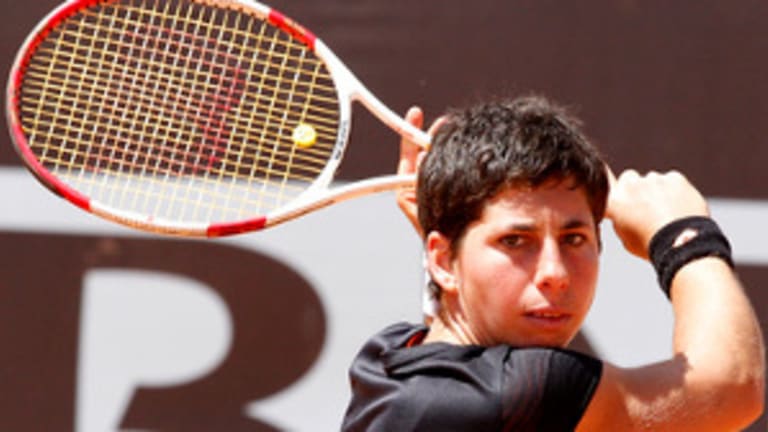We know about Fedal, Rafole, and Djokerer; but did you forget about that other great Big 4 rivalry, Murdal? Rafael Nadal and Andy Murray hadn’t faced each other since October 2011; in that time, they had won five of the nine Grand Slams played. Tennis fans were more than ready for this one. Somehow, Rafa and Andy lived up to, and in the third set even exceeded, our expectations. At their best, these two play chess on wheels.
At first, though, it looked like Nadal, tentative and gloomy, had been stranded at the checkers table. Murray won the first five games, and nearly handed him an extremely rare bagel on clay. During that stretch, Murray was as good as Rafa was bad. Rather than use the trendy, drill-the-ball-into-Rafa’s-forehand strategy, Murray worked the points against him the old fashioned way: He forced the rallies to go crosscourt, from his forehand to Nadal’s backhand, rolling balls high to Rafa’s two-hander and punishing the short responses with his backhand. Murray controlled everything, ran down everything else, and held Nadal to two winners for the set.
In the way the match unfolded, this one reminded me of many of the epics that Nadal played against Novak Djokovic from 2007 to 2009. Like Djokovic in those matches, Murray used superior court position to dominate early; with nothing to lose in the first set, he played freely, and almost perfectly. Then Andy suffered the same pair of Rafa-based problems that once plagued Novak: (1) Now that he had something to lose, Murray stopped hitting quite so perfectly; and (2) Nadal got his teeth into the match and wouldn’t let go.
This time the change came, as it often does for Rafa, in the first two games of the second set. He saved a break point with an ace in the opener, and then, after manufacturing some “Vamos!”-heavy positive energy, he broke with a big inside-out forehand, one of his first pieces of aggressive tennis of the evening. I had a feeling Murray could be in trouble when he grabbed his first body part—this time his knee—in the middle of that game. Doubt had arrived in his body; how long would it take to travel to his mind? Not long. Nadal, pushing forward and turning the tables completely, hit 15 winners, went 12 for 12 at the net, and won the set 6-3. When he broke again to start the third and went up 40-15 on his serve, it looked like the tables weren’t going to turn back again.
At 1-0, 40-15, Nadal came forward and bunted a backhand passing shot low and cross-court; it fooled Murray, and appeared to have skidded past him. But it hadn't. Murray reached behind him and flicked the ball over Nadal’s head for a game-saving winner. Now it was Murray who was off to the races. A series of big forehands earned him the break, and some even bigger full-cut forehand returns earned him another break for 4-2.
Yet while he had the lead, it wasn’t just Murray who had elevated his game. Nadal had upped his as well. The two men spent the rest of the third set trading roundhouse punches and running each into the corners. But it was Nadal, with the naturally heavier ground strokes, who eventually gained the upper hand. Down 2-4, he hit an unreturnable forehand pass off a Murray overhead to break, and proceeded to fist-pump and shuffle across the clay like it was 2005.
The quality stayed high down the stretch, but now the rallies belonged to Nadal. Tomahawking his forehand and reflexing his backhand, he won 12 of the last 13 points to close it out 1-6, 6-3, 7-5 in two hours and 40 entertaining minutes.
We’ve been waiting for both of these guys to find their way this spring. They found it against each tonight and reminded us one more time, just in case we had forgotten, what Big 4 tennis is all about.

